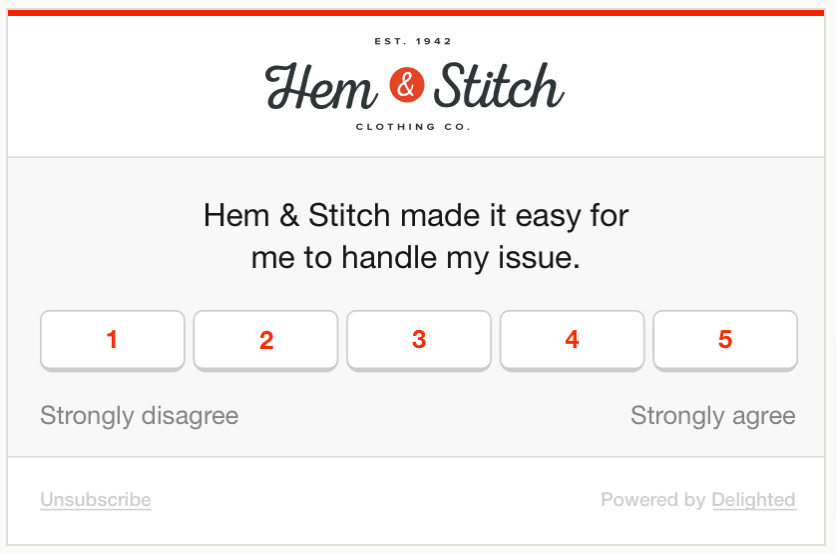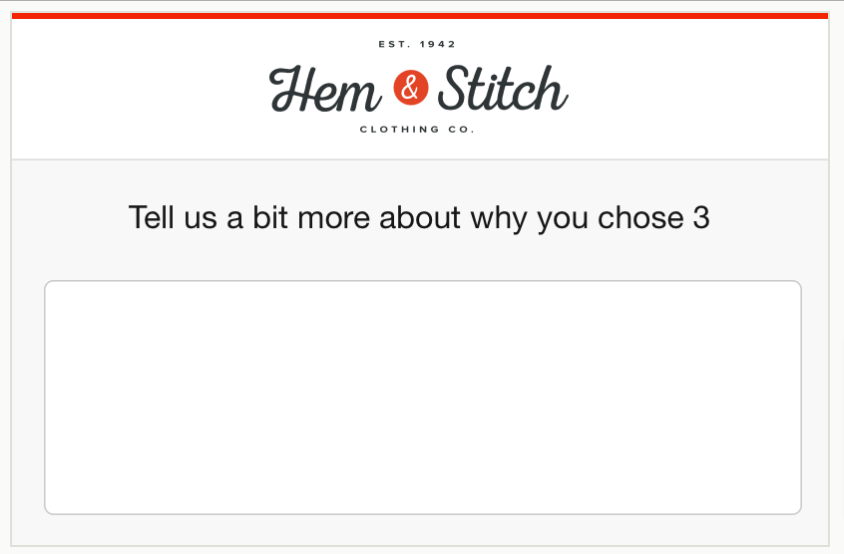Voice of Customer Survey Questions & How to Get Started

One of the most popular ways to collect voice of the customer data is by performing a voice of customer survey.
Build your Voice of Customer program
In this guide, learn how to ask the right questions in your voice of customer survey to get valuable insights, discover which tools to use to build your VoC surveys, and learn how to analyze them without the headaches.
- What Is a Voice of Customer (VoC) Survey?
- Why Voice of Customer Surveys?
- Tips on Creating VoC Surveys
- Common Voice of Customer Question Examples
- Tools for Building Your VoC Survey
- How to Analyze Voice of Customer Surveys
What Is a Voice of Customer (VoC) Survey?
A voice of customer survey gathers quantitative and qualitative feedback from customers about different touchpoints with a company. The goal of a voice of customer survey is to collect insights to improve products, services and overall customer satisfaction.
VoC survey questions can be quantitative, asking for easily calculable responses (Yes/No, multiple choice, “On a scale of 1 to 10,” etc.). Quantitative questions may be as simple as, “How was your experience today?” or “Did we meet all of your needs?” The feedback is easy to run through Excel and other spreadsheets. And some online survey programs offer built-in tools for basic calculations.
Quantitative survey questions can offer powerful results, but they don’t go into as much detail as qualitative survey questions that ask for open-ended responses. Open-ended responses can give as much detail as the respondent is willing to go into. They can offer information about the organization or products and services that the questioner may have never even considered.
While qualitative surveys are more difficult to analyze, once you start using intelligent voice of customer tools, you can set up your analysis to work automatically – with very little human interaction – for powerful, real-time insights.
Whether you’re looking for quantitative or qualitative customer insights, VoC surveys are incredibly important to get into the heads of your customers.
Why Voice of Customer Surveys?
Voice of customer analysis is important to follow the entire customer journey from start to finish to uncover pain points and help improve customer satisfaction. There are a number of tools and strategies for gathering customer feedback, but VoC surveys are one of the most popular, most direct, and easiest ways to get the opinions and data you need to truly understand how customers feel.
- They’re quick and easy to send. Regular customer satisfaction (CSAT) surveys or Net Promoter Score (NPS) surveys can be sent in-app, on your website, via email, etc. They most often generate close-ended responses, but you can easily expand on them with more thorough questions.
Customers are likely to respond to simple surveys. Adding quick surveys directly after purchase, after onboarding, or after a customer service interaction means customers are more likely to respond. They can often be as simple as to only require a click or two to respond.
Then you can ask, “Is there anything else you’d like us to know?” for customers that would like to leave a bit more information.
They are immediate and timely. Offering surveys at certain customer touchpoints allows you to dig into individual areas of your business and analyze them for real-time results.
They can provide quantitative (close-ended) and qualitative (open-ended) VoC data by answering questions, like:
| Close-Ended Questions | Open-Ended Questions |
|---|---|
| From 1 to 10, how would you rate your experience? | How do you feel about your experience with us? |
| Did our product/service meet your needs? | What can we do to improve our product/service? |
| What were your favorite features? [A. B. C. D.] | How do the features help you to achieve your goals. What features are we missing? |
| Is there a product/service you prefer to ours? | How does our product/service compare to the competition? |
| Do you think you’ll use our product/service again? | What would make you want to use our product/service again? |
| Would you recommend our products/services? | What would you say to someone about our products/services? |
| Did our customer service meet your needs? | What would you say about our customer service? |
| Were you satisfied with your experience overall? | What else do we need to know? |
| Did our employees meet your needs? | What can our employees do better to meet your needs? |
Tips on Creating VoC Surveys
Now you know why to ask VoC surveys, but what are some tips on creating VoC surveys?
Include quantitative and qualitative questions. Close-ended questions will allow a super quick and regular analysis of certain pain points you may need to follow as they change day to day or hour to hour. Open-ended questions will allow you to get more nuance and deeper details from your customers.
Keep it simple. The easier it is to answer VoC surveys, the more likely your customers are to respond to them.
Use transactional and relationship surveys. Transactional surveys measure individual customer interactions with your company: customer service, point of purchase, onboarding, etc. Relationship surveys, on the other hand, aim to understand the overall satisfaction a customer has with your company.
Avoid leading questions. Oftentimes, the best VoC information you can receive is something you may have never even considered. Allow your customers to answer with exactly the information they feel is necessary. Let them tell you, in their own words, what they like and what they don’t like about your company or products.
Common Voice of Customer (VoC) Question Examples
The goals you’re after will dictate the kinds of questions you want to ask. Here are some of the most common:
- Value or Results-Based VoC Questions
- Brand Loyalty or Brand Perception VoC Questions
- Customer Satisfaction VoC Questions
1. Value or Results-Based VoC Questions
These are questions that measure a customer’s perceived worth of a product or service compared to the price. Or whether customers are getting the results they need from a product or service.
For example:
- From 1 to 10 how would you rate the value of your purchase?
- Did you find everything you were looking for today?
- What are the most important qualities you look for in a product? With multiple choice options and the option to write in something not listed.
Customer Effort Score (CES) is a common results-based VoC survey that measures the ease of a customer service interaction – the effort a customer had to put in to get their problem solved:

The above is a quantitative survey question and can be calculated in seconds, but you can continue with a qualitative follow-up to find out why the respondent answered with the number they did:

Many respondents may choose not to answer the open-ended follow-up. But you still received a fair amount of good data with a single click from the first one, and those that chose to answer the follow-up are likely to feel strongly about their opinion – which offers particularly powerful data.
2. Brand Loyalty or Brand Perception VoC Questions
Brand loyalty questions are relationship-based questions that measure overall satisfaction with products and service beyond individual uses.
These can be thought of as “how loyal are customers to the idea of the brand?”.
Net Promoter Score (NPS) surveys are one of the most commonly used brand loyalty surveys in VoC analysis, generally asking the simple question:
“On a scale of 0 to 10 how likely are you to recommend our company to a friend or colleague?”
Respondents are then scored as Detractors (0 to 6), Passives (7 and 8), or Promoters (9 and 10):

NPS aims to find the customers with the most positive and most negative views of a company. Ideally, you can then follow up with an open-ended question to understand why they feel the way they do.
3. Customer Satisfaction VoC Questions
Customer Satisfaction (CSAT) surveys are another common VoC survey that, depending on how and when they are asked, could be either transactional or relationship-based.
Some examples of CSAT surveys:
Zapier

Zoom

Asana

As you can see, some of the best surveys don’t just ask one question but give the user the option to choose the subject of their feedback or what kind of feedback they’re giving.
This can cause problems, however, if the surveys are difficult to find on your website or app or take too long to fill out. So, don’t forget to make them simple. Maybe you’ll find it’s best, for example, to only answer one question but offer that question at particular points on the customer journey.
Tools for Building Your VoC Survey
Once you know which questions you need to ask, you can start building your VoC survey.
Online survey tools make it easy to customize your VoC surveys, send, and collect the data all in one place.
Here are a few that we recommend:
How to Analyze VoC Surveys
Now that you’ve gathered all that great VoC data, it’s time to put it to use. As mentioned, quantitative VoC data is easiest to gather and analyze, but you can get even more fine-grained results from analyzing open-ended responses.
That’s where machine learning tools come in.
MonkeyLearn is a text analysis platform with powerful tools to get the most from your survey data – and voice of customer data from other internal sources (customer service interactions, emails, live chats) and all over the web (customer feedback from social media, online reviews, and more).
Try out our demo visualization dashboard, where you can slice and dice your data by topic, keyword, sentiment, and more:

Sign up to MonkeyLearn for free and try out the tools before you buy.
Request a demo for a walk-through of how to perform VoC survey analysis with MonkeyLearn.

Inés Roldós
March 16th, 2021






